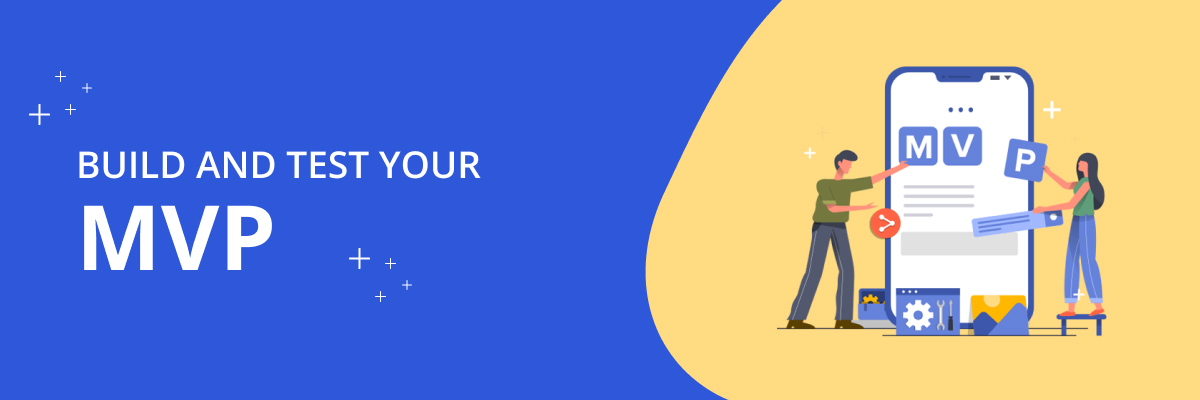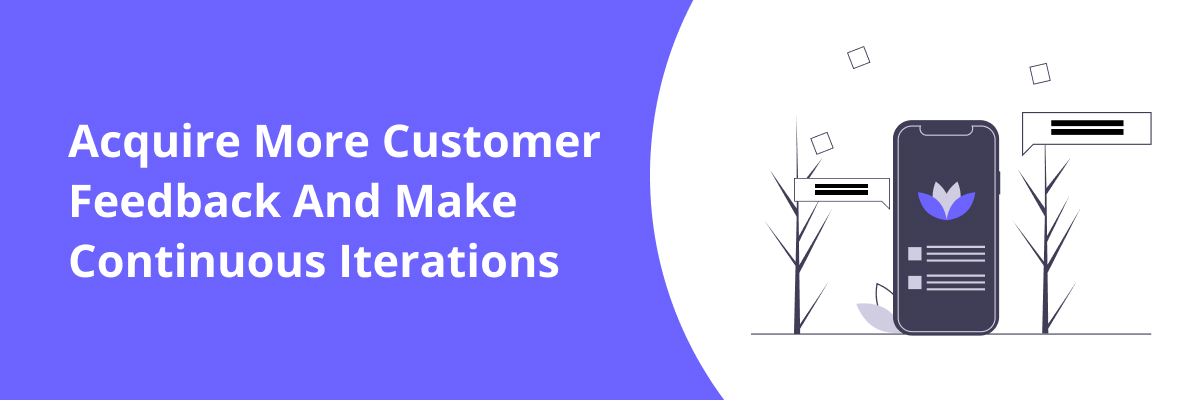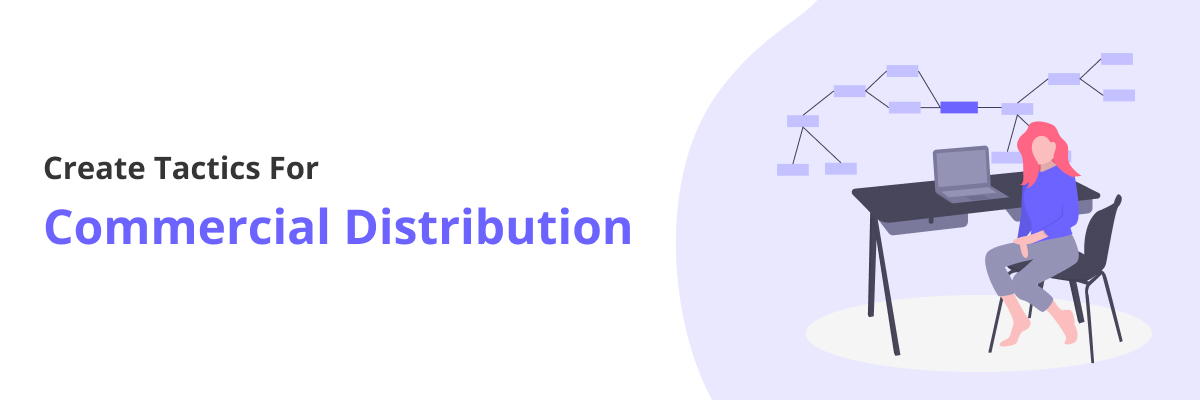If you’re reading this article, I assume you must be a startup founder getting ready to create a new software product or trying to improve your current process. If that’s the case, you might be worried about your product’s success and the positive effect it will bring to your overall business.
I have a background in International Relations and Peace Studies. My experience working with people worldwide has helped me empathize with and provide solutions to people’s problems. We work with many startup founders, so I spoke to a few and quickly learned that product development is one of the most challenging hurdles a startup founder has to overcome in his journey to build his business.
This discussion led me to understand a few common mistakes startup founders make during product development. Startup owners often try to fasten product development by not spending enough time researching the marketplace requirement. This leads to the development of a lousy prototype that lacks quality and benefits for the target customer. If not done right, slacking in product development could lead to significant financial loss.
The path to developing the ideal product has several steps to follow. It is not a single-lane highway to success. Due to heavy competition, understanding the market’s preferences and switching between plans to match your product with their needs is a road filled with twists and turns and multiple roundabouts. In between this confusion, following the right track is essential, along with rinsing and repeating each step when iterations are necessary.
Here, I’ve tried to list a few pointers you should be aware of while developing your startup product.
Spend Sufficient Time on Product Ideation
The first step of software development for startups is to mould a good idea to convert into a profitable product.
An easy way to do this is by brainstorming ideas. What I mean by this is to think and list problems that you face daily and sort solutions to them. It is highly likely that if you encounter an issue without a satisfactory solution at present, others might be facing it too. Then and there arises a market need you can address with a suitable product solution.
Bear in mind that not all the ideas you come up with must be entirely feasible.
Play with your imagination- think about existing solutions to needs, can you improve them? How can you improve them? Can you come up with a better product solution for that need? Mix and match your ideas and thoughts at this stage, as the following steps are solely dedicated to checking for its feasibility and efficiency.
Whatever your ideas may be, simply ensure that you have clear and concise answers to who your target customers would be, how your product will satisfy your target customers’ needs, and what is your value proposition.
Check out our blog on 14 Sure Signs That You Have A Great Business Idea.
Validate and Screen Your Ideas
Your idea might be a brilliant one, but its success cannot be guaranteed without proper market research and screening. By doing this, your goal must be to find which idea is fit to deliver maximum profit for your business.
Experts from startup product development companies recommend using various strategic planning frameworks after thorough market research to facilitate ideas into ones that work and don’t. SWOT analysis is one of the easiest and most popularly used tools for this purpose.
By running your idea through SWOT analysis, you can get a visual grid-like representation of the strengths, weaknesses, opportunities, and threats the product idea would bring to your business. The results obtained will help you differentiate your product idea’s qualities that increase your business’s strength and opportunity from those with increased weaknesses and threats. Eventually, if your idea promises maximum benefits and minimal risks, it is suitable to proceed with further product development.
In the worst case that your idea gets disqualified through the SWOT analysis, you might have to return to the first step and generate new ideas. Don’t be discouraged by this. It is better to identify flaws and correct them in the early stages than discover them after investing time and resources.
Take a look at the 13 App Marketing Strategies That Startups Must Know.
Plan Mind-blowing Concepts for Your Product
Once you nail the idea you will proceed with, it’s time to plan a firm concept to develop.
This step is where you draw a face for your product. Just like how your near and dear ones identify you by your looks, your product’s face (concept) is what customers will get accustomed to associate with your brand. By this, you have to define your product’s detailed aspects and how it will be conveyed to your target consumers.
Your prime motive must be to highlight your product’s qualities that customers will be able to grasp through their first interaction with your software. Altogether, the concepts that you plan will determine how customers will perceive and receive the product.
It is advisable to seek help from proficient software development companies for startups to obtain better clarity in this step. Expert developers and analysts from such companies are technically equipped to plan feasible concepts for your product and provide you with assured results.
Outsource Things You’re Not an Expert At
Just because it’s your business idea, you need not be an expert at handling everything associated with your product development. It is always better to seek help from professionals when in need, who are experts in their fields, to get your work done. This will save you time, effort and money in the future. Along with a significant effect on the quality of the product produced.
The frontend and backend development of your software, and the architecture, are some of the main features that you need to pay special attention to, while developing your software product. For this, I encourage you to consult software development companies for startups to ensure that your product is dealt with by safe hands.
Software development companies like NeoITO, dedicated to serving startups affordably, are great options for you to consult with to meet your product expectations.
Have a look at the Types of IT Outsourcing Models and How to Choose Between Them.
Build and Test Your MVP

Now that you have your product idea and detailed concepts in place, the next step is to build a prototype or sample of your product. All the product concepts that you developed will come to reality here. It is meant to be the minimalistic version of your product that fits your target customers’ usage.
Your software prototype will showcase a mock-up of its user experience and will help you improve your final product design after multiple testing and iterations. At this point, you can assemble your prototype and present it to your target customers to test and evaluate its pros and cons. Feedbacks from them will help you see the flaws within the ideation and concept development of your product.
In most cases, you would be able to engage positively in the idea generation and concept development process of product development. Still, you might not have the technical capacity to transform it into a prototype. If you reach this difficult brink point, outsourcing the prototyping work to renowned companies that take care of software development services for startups is your safest bet.
Such companies can transform your ideas and concepts into strongly marketable, quality prototypes. Establishing a partnership with their technical team will give your brand an advantage in creating photogenic software prototypes and run them through multiple testings to ensure maximum efficiency.
Do you know Why Should You Create a Prototype for Your Startup Idea?
Acquire More Customer Feedback and Make Continuous Iterations to the Product

Once your MVP is built, it’s now time to test its impact on your target customers. The goal behind this initiative is to collect maximum feedback about your product from reliable customers.
To facilitate the process, it is essential to create open-ended questionnaires that you can present to your customers along with your product. Set a timeline during which your target customers will use your product and have enough experience with its usage. Once that’s completed, your target customers will be fit to provide you with suitable feedback.
The feedback you receives, no matter positive or negative, are beneficial to evaluate your product’s status. Study the negative feedback you receives and work on iterating and testing your product again until the negative feedbacks range to zero.
Let me warn you, if you feel like your product cannot get rid of all the negative feedback despite multiple iterations, don’t stick around and waste more time on it. Instead, it is better to quickly jump back to the ideation process and check for flaws in the process so far.
Work Towards a Product-Market Fit
Achieving a product-market fit for your MVP is very crucial. This is where you ensure that your product is a decent one that serves the needs of the market appropriately.
Confirm that you have got all the aspects related to your product right. Most importantly, the target customers, their undeserved needs, the values you add to your product, and the features to include in your MVP. After this comes the part where you build your MVP to undergo testing and iterations.
Once your product reaches a point where it receives zero negative feedback, your product has successfully achieved product-market fit.
Raise Funds from Multiple Sources

Being a startup, it is no big secret that your budget and finance will be constrained and limited. It is improbable to have an established track record within the industry supported by a large sum of capital or private equity.
Since your entry into the market will be pretty fresh, you may face difficulty finding new sources to finance your project. This is where the prototype you created will come in handy.
Using your software prototype, you can interest prospective investors by conducting crowdfunding opportunities, applying for loans, or seeking angel investors. It will provide the investors with an idea of what your product is and how investing in it will bring long-term benefits for them.
The importance of having an impressive prototype is more predominant now as it pretty much decides the future of your startup. Without gaining sufficient funds and investment to support your product development, your startup dreams would face troubles due to lack of capital.
Fundraising is a serious procedure. The steps that follow in developing your software will burn through your funds before you know. Thus, investing in the right technical team to support you through the prototyping process will help you gain valuable investments in the future.
How to raise Startup Investment: Finding Right Investors & Alternative Fundings.
Manufacture and Market Your Product Relentlessly
Like a magnets’ attraction principle, the right kind of marketing technique will automatically attract the intended target customers.
Many startups with great products often go unnoticed in the market despite being supported by a great idea and concept. One thing that I realized after studying such startup failure stories was that brands that fail in marketing their software products end up falling down the rail too soon.
Without proper marketing, your target customers might not understand your product’s intent and will not associate with the market need you tried to solve. Thus, boasting about your USP extensively in multiple channels using the latest and most appropriate techniques is vital.
To know which marketing technique best suits your project, it is best to conduct the necessary test marketing beforehand. By doing this, you will save time and money from investing in the wrong techniques. Your product’s test marketing phase should focus on positioning strategies to engage more customers through advertisements, mode of distribution, etc. Ensure that you do not go all-in with your investments in this phase as it is purely experimental.
Consider this phase as a learning process. The feedback you gain from testing your marketing strategies will define what works best and doesn’t. It is best to place yourself in an agile position to shift your focus to advantageous mediums as and when it comes.
Here a beginner’s guide to Why Startups Fail and How To Make Them Successful.
Create Tactics for Commercial Distribution

Finally, the last step in the right way to develop a product is to ensure that it is commercialized appropriately. Once the product prototype and marketing strategies have been tested and finalized, it’s now time to push your product out into the market. This step is known as commercialization and requires you to make large investments to meet the promotional content and advertisement requirements.
There are a few key things to keep in mind before you set out to commercialize your product.
The timing at which you introduce your product to the market will affect your outcome in many ways. Introducing your product when the economy is stable or booming is the most preferred time for a product launch. On the other hand, if your competitor is ready to introduce a similar product to the market, try to evaluate the pros and risks to launch your product earlier.
Also, determine the range and location at which you intend to launch the product. A startup would typically only have the confidence to start their distribution small and increase it in time. This seems like the best approach to go about it, as it reduces the accompanying risks.
For more check out the Types of Research Methods to Launch a Successful Startup.
Why is Understanding the Market and Product Iterations Necessary for Making a Good Software Product?
It is imperative that you understand the severity behind this, as software product failures due to improper market research and insufficient iterations are all too common.
For instance, one such incident that hit the news headlines in 2017 was when a Frenchman sued Uber as his wife discovered his affair with his lover through a bug within the app.
Such incidents decrease your software product’s credibility and are not situations that can be reversed, especially for startups.
Thus, strategically initiating the right ways to develop your product and conducting frequent checks guarantees you incomparable product development success.
Conclusion
Now that you are well informed about the crucial steps involved in developing a software product, you must have realized that hiring a software development company for the same is the safest rational choice. The only hurdle left is to find the right partner company to guide you with their team of experts through product development.
At NeoITO, we have years of experience assisting startup founders with all kinds of startup product development issues. Be it prototyping, MVP development, or product development, we have hired competent experts trained to act according to your needs.
This makes us the best technical partners in town to make your product development journey smooth and successful.
We stand out with our user-centric approach- To us, your needs are our priority.
If you need help, book a free consultation to talk to our team.






